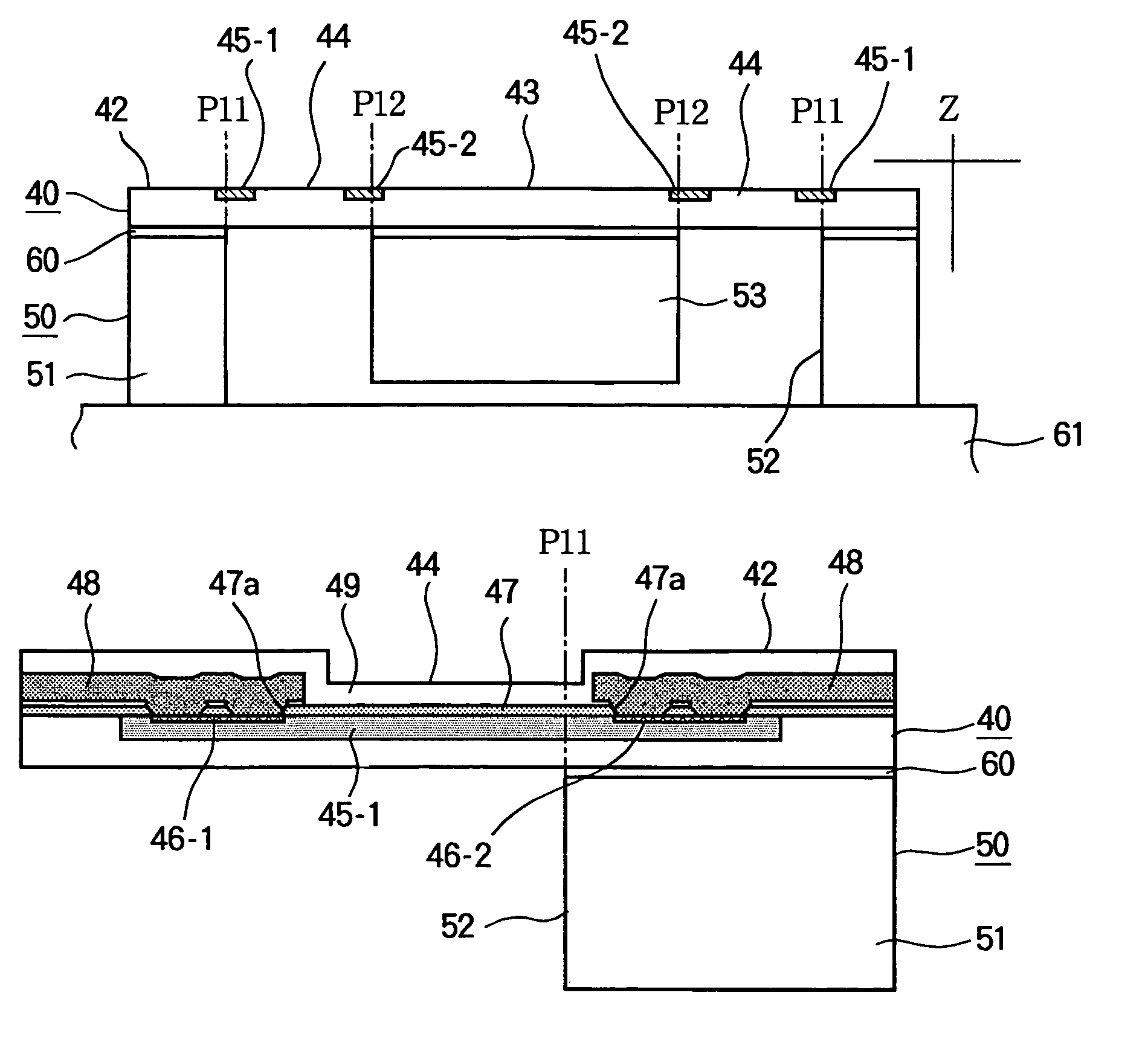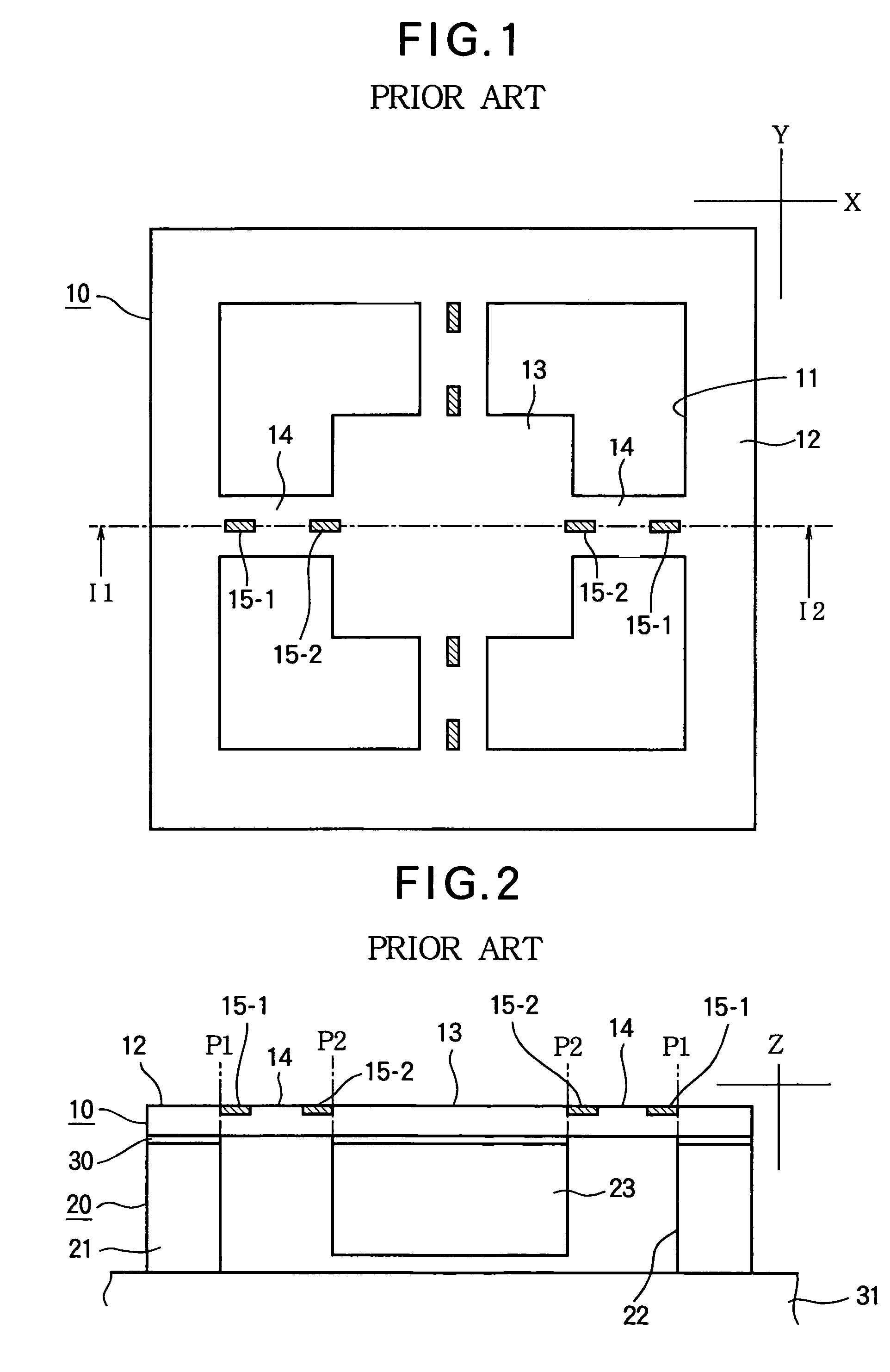Acceleration sensor with redundant contact holes
a contact hole and acceleration sensor technology, applied in the direction of speed/acceleration/shock measurement, semiconductor devices, instruments, etc., can solve the problems of shortening the life of the sensor, affecting the accuracy of the sensor, so as to achieve sensitive and reliable results
- Summary
- Abstract
- Description
- Claims
- Application Information
AI Technical Summary
Benefits of technology
Problems solved by technology
Method used
Image
Examples
Embodiment Construction
[0031]An embodiment of the invention will now be described with reference to the attached drawings, in which like elements are indicated by like reference characters.
[0032]Referring to FIG. 4, a piezoelectric three-axis acceleration sensor is formed by etching a silicon-on-insulator wafer comprising a first silicon layer 40 approximately five to ten micrometers (5 to 10 μm) thick and a second silicon layer 50 approximately 525 μm thick joined by a bonding layer 60 such as a buried silicon oxide layer (BOX layer) approximately 5 μm thick. The first silicon layer 40 is a semiconductor silicon layer doped with an n-type impurity and has a volume resistivity of about six to eight ohm-centimeters (6 to 8 Ω·cm). The second silicon layer 50 is a silicon substrate layer having a volume resistivity of about 16 Ω·cm.
[0033]Referring to FIG. 3, the first silicon layer 40 for one acceleration sensor is substantially square with sides approximately two and a half millimeters (2.5 mm) long, compri...
PUM
 Login to View More
Login to View More Abstract
Description
Claims
Application Information
 Login to View More
Login to View More - R&D
- Intellectual Property
- Life Sciences
- Materials
- Tech Scout
- Unparalleled Data Quality
- Higher Quality Content
- 60% Fewer Hallucinations
Browse by: Latest US Patents, China's latest patents, Technical Efficacy Thesaurus, Application Domain, Technology Topic, Popular Technical Reports.
© 2025 PatSnap. All rights reserved.Legal|Privacy policy|Modern Slavery Act Transparency Statement|Sitemap|About US| Contact US: help@patsnap.com



